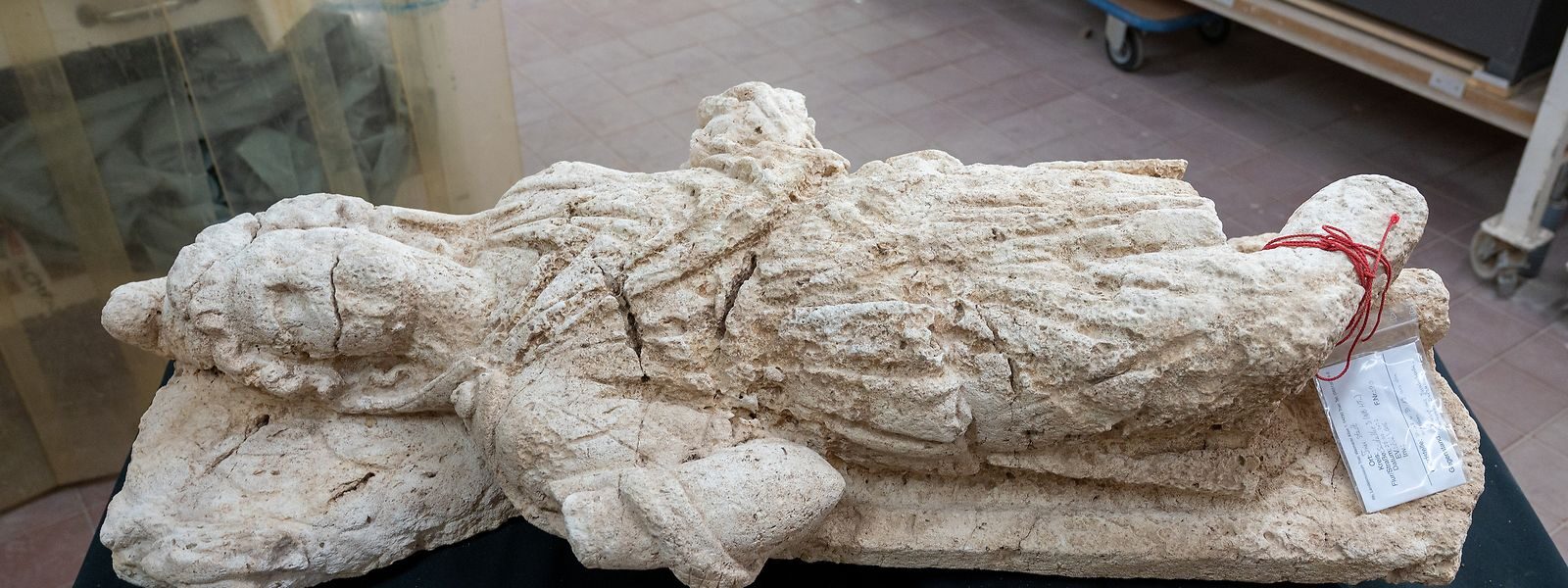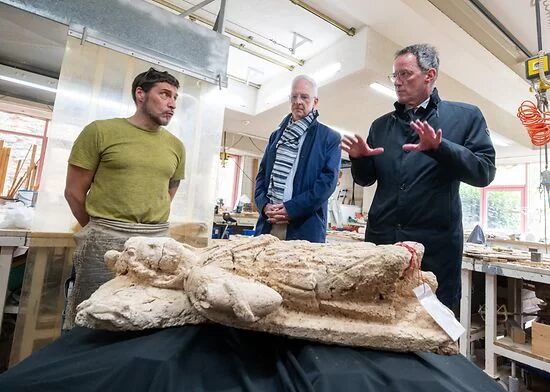The first findings from archaeological excavations started in Trier in February of this year at a site where a new central station for the city fire department was to be built was presented. Scientists discovered the remains of the Mithraeum - the sanctuary of the ancient Roman deity Mithra, which was destroyed and abandoned at the end of the 4th century.
So far, the most significant discovery at the excavation site has been a 1.2-meter limestone bas-relief depicting Cautes, one of Mithras' two torch-bearing companions.
Cautes and Cautopates symbolize sunrise and sunset, summer and winter, and life, and death. Outwardly, they do not differ, but one holds the torch lit and up, the other - extinguished and down.
Mithra is a deity of Indo-Iranian origin - the god of friendship, harmony, agreement, and sunlight. As emphasized at a press conference in Trier on Tuesday, April 11, Mithraism spread throughout the Roman Empire in the second and third centuries of our era, particularly among legionnaires who believed Mithra brought victory.
Trier, founded by the Romans on the Moselle in 17 BC, is the oldest city in Germany and was the largest ancient Roman settlement north of the Alps.
For Trier, this is the second evidence of such a place of worship for the god Mithras, interior Minister Michael Ebling (SPD), responsible for cultural heritage said.

In the Roman Empire, Mithraism was widespread and for some time competed with Christianity. After Christianity became the official state religion, the cult started to decline. After that, the sanctuaries were destroyed or abandoned. In place of some, Christian churches were erected.
The relief is now in the restoration workshops of the Rheinisches Landesmuseum in Trier.





Reader Comments
So the Church of Rome who took the reigns of the world rule both religious and emperor via the Popes make the 25th the faux birth of Christ, Sun of Righteousness. The dead give away is in the word as to it's falseness: Christmas or Christ Mass... hmm, birth called MASS? Mithras was Lucifer the Sun God with many names including Saturn.
Together with the Vedic common noun mitra, the Avestan common noun miθra derives from Proto-Indo-Iranian *mitrám (Mitra). In Middle Iranian languages (Middle Persian, Parthian etc.), miθra became mihr, from which New Persian مهر mehr and Armenian mihr/mehr ultimately derive.
Mithraism (Mehr means kindness in Persian) was the ancient religion in Iran, which is the worship of the Sun (Son of god, the giver of life on our planet). The first nation that became Christian (Orthodox) was Armenia , which originally followed Mithraism. The cabal hijacked Mithraism, replacing the sun god with a person. So when they say that Jesus is the son of god, they are correct in that sense. This explains all the similarities between Christianity and Mithraism.
Mithraism was on the rise in Rome and something had to be done, since Iranian empire was their arch rival. Mithraism was hijacked and turned into a cult. Members had to be initiated and swear to secrecy. Sacrificing a bull was part of their ritual. All of which were totally the opposite of the original Iranian Mithraism.
In Zoroastrian it is Ahriman (Satan) that sacrifices a bull. Saturnalia was turned into Christmas, and a newer version of Christianity, centered in Rome was created.
Sheesh....
What to believe.
It appears all that is good is now distorted beyond recognition.
Keep posting.
I learned...
After all, most Mithraeums have been found in the basement of churches and could have been used in secret for centuries afterwards. Given the tactics of the Roman Church/Empire, I doubt most "Christians" had their heart in it to the degree the Church itself and historians often presume.